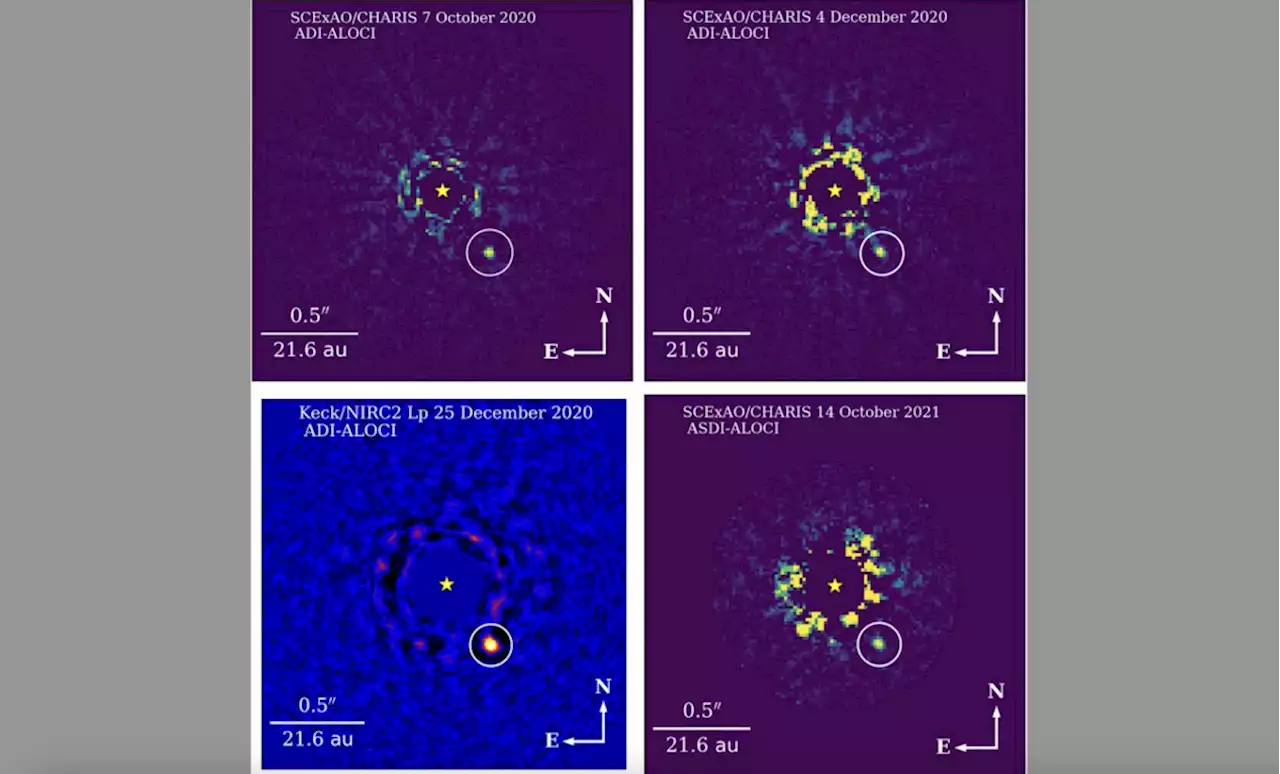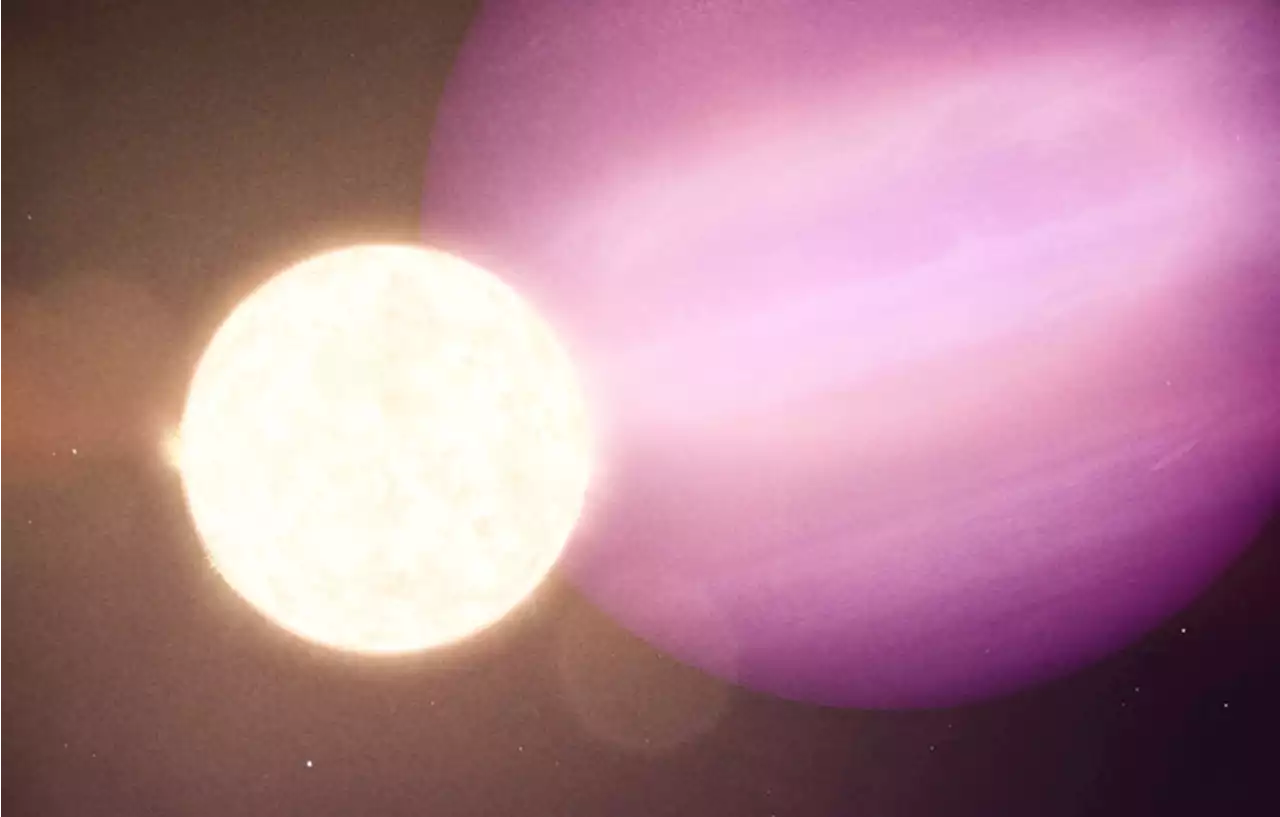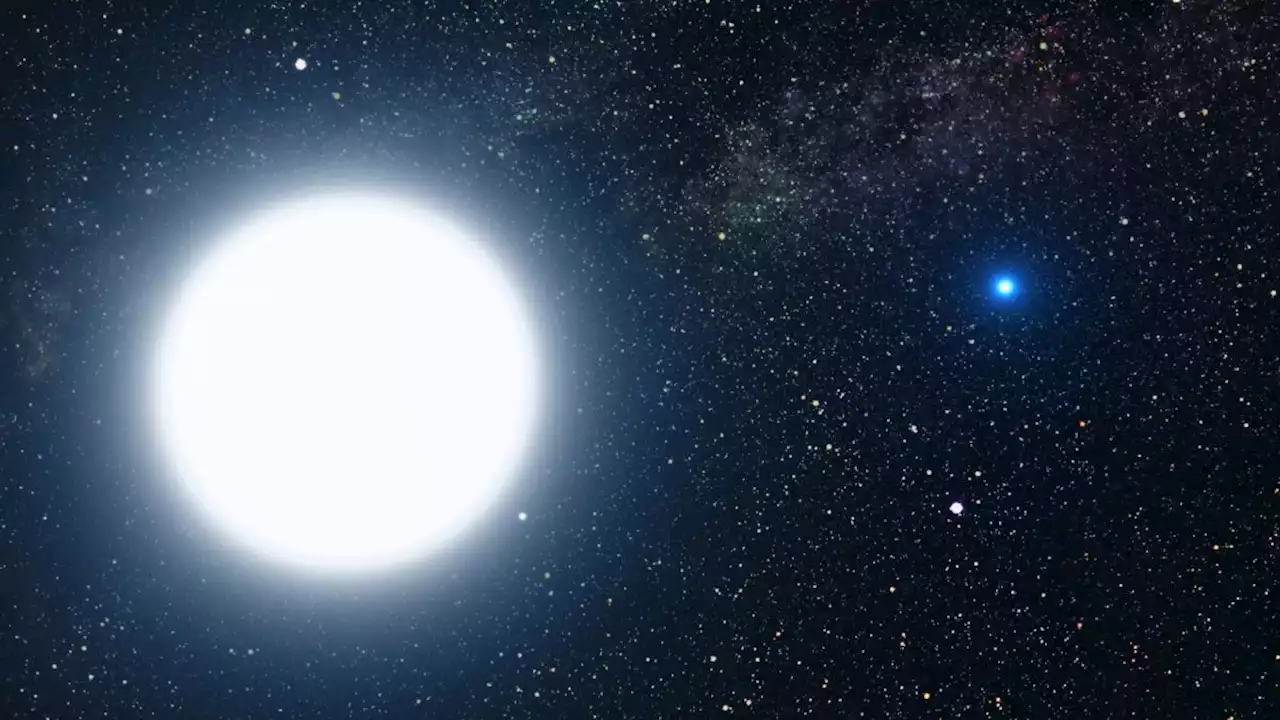Quaoar, a dwarf planet, is hiding a big surprise – an orbiting ring of debris that shouldn't be there, according to our understanding of planetary physics
, which is 1110 kilometres across and is slightly less dense than our moon, should have only moons beyond a distance of 2.4 times its radius of 555 kilometres, but Morgado and his colleagues measured the ring at 7.2 times Quaoar’s radius. “It’s very, very far outside this limit,” says Morgado.
They found that the ring appears to be mostly made up of water ice, a bit like Saturn’s F-ring. One unusual property of the ring is its irregular shape – some sections are 5 kilometres wide, while others span more than 100 kilometres. Standing on the surface of Quaoar, you should be able to see some of the ring’s wider sections, says Morgado.
It is also possible that interactions between the ring’s particles or with Quaoar’s moon, Weywot, could be sustaining the ring. Further observations of Quaoar and more simulations of the system’s dynamics will be needed before a definitive answer can be found, says Morgado.Whatever the answer is, we might need to modify the Roche limit, which could have implications for other calculations in astrophysics.
Australia Latest News, Australia Headlines
Similar News:You can also read news stories similar to this one that we have collected from other news sources.
 First Observations of the Brown Dwarf HD 19467 B with JWSTWe observed HD 19467 B with JWST's NIRCam in six filters spanning 2.5-4.6 $μm$ with the Long Wavelength Bar coronagraph. The brown dwarf HD 19467 B was initially identified through a long-period trend in the radial velocity of G3V star HD 19467. HD 19467 B was subsequently detected via coronagraphic imaging and spectroscopy, and characterized as a late-T type brown dwarf with approximate temperature $\sim1000$K. We observed HD 19467 B as a part of the NIRCam GTO science program, demonstrating the first use of the NIRCam Long Wavelength Bar coronagraphic mask. The object was detected in all 6 filters (contrast levels of $2\times10^{-4}$ to $2\times10^{-5}$) at a separation of 1.6 arcsec using Angular Differential Imaging (ADI) and Synthetic Reference Differential Imaging (SynRDI). Due to a guidestar failure during acquisition of a pre-selected reference star, no reference star data was available for post-processing. However, RDI was successfully applied using synthetic Point Spread Functions (PSFs) developed from contemporaneous maps of the telescope's optical configuration. Additional radial velocity data (from Keck/HIRES) are used to constrain the orbit of HD 19467 B. Photometric data from TESS are used to constrain the properties of the host star, particularly its age. NIRCam photometry, spectra and photometry from literature, and improved stellar parameters are used in conjunction with recent spectral and evolutionary substellar models to derive physical properties for HD 19467 B. Using an age of 9.4$\pm$0.9 Gyr inferred from spectroscopy, Gaia astrometry, and TESS asteroseismology, we obtain a model-derived mass of 62$\pm 1M_{J}$, which is consistent within 2-$σ$ with the dynamically derived mass of 81$^{+14}_{-12}M_{J}$.
First Observations of the Brown Dwarf HD 19467 B with JWSTWe observed HD 19467 B with JWST's NIRCam in six filters spanning 2.5-4.6 $μm$ with the Long Wavelength Bar coronagraph. The brown dwarf HD 19467 B was initially identified through a long-period trend in the radial velocity of G3V star HD 19467. HD 19467 B was subsequently detected via coronagraphic imaging and spectroscopy, and characterized as a late-T type brown dwarf with approximate temperature $\sim1000$K. We observed HD 19467 B as a part of the NIRCam GTO science program, demonstrating the first use of the NIRCam Long Wavelength Bar coronagraphic mask. The object was detected in all 6 filters (contrast levels of $2\times10^{-4}$ to $2\times10^{-5}$) at a separation of 1.6 arcsec using Angular Differential Imaging (ADI) and Synthetic Reference Differential Imaging (SynRDI). Due to a guidestar failure during acquisition of a pre-selected reference star, no reference star data was available for post-processing. However, RDI was successfully applied using synthetic Point Spread Functions (PSFs) developed from contemporaneous maps of the telescope's optical configuration. Additional radial velocity data (from Keck/HIRES) are used to constrain the orbit of HD 19467 B. Photometric data from TESS are used to constrain the properties of the host star, particularly its age. NIRCam photometry, spectra and photometry from literature, and improved stellar parameters are used in conjunction with recent spectral and evolutionary substellar models to derive physical properties for HD 19467 B. Using an age of 9.4$\pm$0.9 Gyr inferred from spectroscopy, Gaia astrometry, and TESS asteroseismology, we obtain a model-derived mass of 62$\pm 1M_{J}$, which is consistent within 2-$σ$ with the dynamically derived mass of 81$^{+14}_{-12}M_{J}$.
Read more »
 'Failed star' brown dwarf imaged in nearby star cluster (photos)The brown dwarf, which straddles the line between a star and a planet, orbits a star in the Hyades cluster.
'Failed star' brown dwarf imaged in nearby star cluster (photos)The brown dwarf, which straddles the line between a star and a planet, orbits a star in the Hyades cluster.
Read more »
 Fascinating image shows light bending around a white dwarf starAstronomers have managed to measure the mass of an isolated white dwarf star for the first time using gravitational lensing.
Fascinating image shows light bending around a white dwarf starAstronomers have managed to measure the mass of an isolated white dwarf star for the first time using gravitational lensing.
Read more »
 A dwarf planet beyond Neptune has a mysterious ring that astronomers can't explainThe ring is so far from the dwarf planet's surface that its material should have coalesced into a moon. But somehow, it didn't.
A dwarf planet beyond Neptune has a mysterious ring that astronomers can't explainThe ring is so far from the dwarf planet's surface that its material should have coalesced into a moon. But somehow, it didn't.
Read more »
 NASA scientists 'weigh' a white dwarf for the first time using a space-time trick predicted by EinsteinNASA astronomers used the Hubble Space Telescope to measure the mass of a white dwarf, an important step for understanding how stars die.
NASA scientists 'weigh' a white dwarf for the first time using a space-time trick predicted by EinsteinNASA astronomers used the Hubble Space Telescope to measure the mass of a white dwarf, an important step for understanding how stars die.
Read more »
